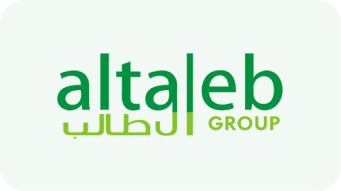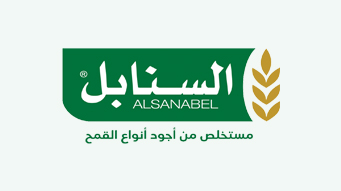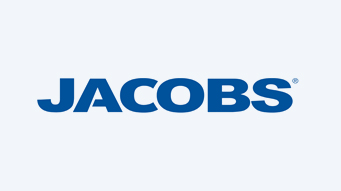
Comparison of Greywater Treatment Technologies
Greywater treatment technologies are basic systems designed to treat and recycle wastewater generated from household activities, such as bathing and washing, for reuse in non-potable applications. These technologies play a critical role in addressing water scarcity, promoting sustainability, and reducing the environmental impact of wastewater. With growing global concerns about water resources, the adoption of greywater treatment has gained significant attention in both urban and rural areas, highlighting its potential for sustainable water management practices.
The main categories of greywater treatment include physical, chemical, and biological methods, each of which utilizes distinct technologies to improve water quality. Physical treatments, such as filtration and sedimentation, effectively remove suspended solids. However, they often require integration with chemical or biological processes to address dissolved organic matter and nutrients. Biological methods utilize natural microbial activity to break down contaminants, while chemical treatments utilize coagulants to enhance their removal.
Innovations such as membrane bioreactors and electrocoagulation represent advancements in these categories, offering effective solutions to various pollution challenges. Despite their benefits, graywater treatment technologies face numerous controversies and barriers. Regulatory restrictions and the lack of standardized guidelines may hinder their deployment, as do public concerns about safety and effectiveness. Economic factors, including high initial costs and ongoing maintenance expenses, further complicate the decision-making process for potential users. Addressing these challenges is critical to unlocking the full potential of graywater treatment systems in promoting water conservation and sustainability. In light of the increasing global demand for water, understanding and comparing the effectiveness, costs, and operating dynamics of various graywater treatment technologies is crucial. Evaluating these systems not only helps in selecting appropriate solutions for specific contexts but also highlights their role in alleviating water scarcity and promoting environmental sustainability.
Types of Graywater Treatment Technologies
Graywater treatment technologies can be broadly classified into three main types: physical, chemical, and biological treatments. Each method plays a vital role in improving the quality of greywater for reuse and treating the various pollutants and impurities present in domestic wastewater.
Physical Treatment
Physical treatment methods focus on removing suspended solids and larger impurities from greywater through processes such as filtration and sedimentation. Common technologies include sand filters, grit filters, and mesh filters, which can achieve significant reductions in total suspended solids (TSS) and turbidity, often with efficiencies exceeding 80%.
However, physical treatments alone are typically insufficient to effectively reduce dissolved organic carbon and nutrients such as phosphorus and ammonia, necessitating the integration of chemical or biological processes for more comprehensive treatment.
Advanced Physical Technologies
Recent innovations have led to the development of advanced physical treatment technologies, such as membrane bioreactor (MBR) systems. These systems combine biological treatment processes with membrane filtration to produce high-quality effluents with low levels of contaminants such as biochemical oxygen demand (BOD) and chemical oxygen demand (COD).
Biological Treatment
Biological treatment methods utilize natural microbial processes to decompose organic matter within graywater. Technologies such as aerobic bioreactors and manufactured wetlands facilitate the breakdown of organic contaminants. These biological systems can achieve high levels of pollutant reduction when combined with physical and chemical treatments.
Rotating Biological Contactors
The rotating biological contactor (RBC) is an example of a biological treatment technology. It can effectively reduce total suspended solids (TSS) levels by up to 95% and biochemical demand (BOD) concentrations by approximately 93%. However, solids removal efficiency may be reduced under aerobic conditions due to insufficient swarm formation, necessitating the integration of additional treatment processes to improve performance.
Chemical Treatment
Chemical treatment technologies improve pollutant removal by adding coagulants and other chemicals. Coagulation often uses agents such as calcium hydroxide (Ca(OH)₂) and ferric chloride (FeCl₂), which can reduce chemical oxygen demand (COD) and biological oxygen demand (BOD) levels by up to 90%. However, these treatments can alter the pH of the graywater, complicating subsequent treatment processes. Therefore, the effectiveness of chemical treatments is often improved when combined with physical methods.
Electrocoagulation
Electrochemical (EC) treatment is a pioneering treatment technology that uses electrical currents to purify water, helping to aggregate contaminants into larger particles for easier removal. This method is effective at treating a wide range of contaminants, including heavy metals and pathogens, making it a promising solution for various industrial applications.
Read more about: The steps for designing and building a graywater plant
Comparison Benchmarks
Sustainability Indicators
When evaluating graywater treatment technologies, a variety of sustainability indicators should be assessed to effectively compare the performance of different systems. These indicators may include resource conservation, energy efficiency, and environmental impact, providing a comprehensive view of each technology’s contribution to sustainable water management practices.
Economic Factors
Initial Costs
The initial cost of a graywater treatment system is a critical factor in its evaluation. Costs can vary widely, ranging from $500 for basic systems to $5,000 for fully automated setups. Similarly, on-site integrated wastewater treatment systems can cost anywhere from $4,500 to $8,500, depending on complexity and capacity.
Operation and Maintenance Costs
Operation and maintenance costs are also key factors. These include energy consumption, part replacement, and labor costs, which can impact the long-term economic viability of systems. For example, the annual operating costs of specific systems can vary widely, with some systems costing between $1,000 and $5,000 per month, depending on the technology used and the size of the project.
Life Cycle Cost Analysis
Economic evaluations should consider life cycle costs, including initial and ongoing expenses. Factors such as discount rates and the expected economic life of the system should be considered to determine the present value of future costs and benefits, which aids in decision-making regarding potential investments in graywater treatment systems.
Feasibility Studies
Feasibility studies play a pivotal role in assessing the suitability of a proposed graywater treatment system for site conditions and water needs. This process involves comparing the estimated availability of graywater with the projected needs to ensure that any discrepancies will not render the project ineffective or unsuitable for the intended application.
Design Alternatives
Once feasibility has been determined, various design alternatives can be explored. These alternatives should be evaluated based on costs, maintenance requirements, and overall project objectives, such as reducing water consumption and improving water quality. Design choices should also consider operational history, usage conditions, and resource availability, as these factors can significantly impact the effectiveness and sustainability of the treatment system.
Challenges and Barriers
The implementation of on-site water treatment and recycling systems for graywater management faces several significant challenges and barriers. These barriers hinder the widespread and effective use of these technologies in the United States.
Regulatory Constraints
The lack of legislative authority and regulations governing on-site wastewater treatment systems is a major obstacle. In many regions, restrictive and ambiguous plumbing codes apply, creating confusion and uncertainty for potential users and installers.
Furthermore, there is a marked lack of standardized guidelines for recycled water. This reduces confidence in the safety and effectiveness of on-site systems compared to centrally managed municipal wastewater treatment facilities.
Learn about The Greywater Reuse Guide in the Kingdom
Technical Constraints
Technical challenges also pose significant barriers. Concerns about cross-connection management and the potential for contamination raise hesitation among users and regulatory bodies alike. This lack of confidence in standard practices complicates the acceptance of decentralized treatment technologies. Furthermore, the variability in the bacteriological characteristics of greywater, which may contain different indicator organisms, raises health and safety concerns.
Public Opinion and Preference
Public opinion plays a critical role in the adoption of graywater treatment technologies. There is a tendency to favor the use of treated water from central municipal systems rather than relying on on-site treatment methods. This preference is often driven by a combination of the perceived risks associated with on-site systems and the reliability of established municipal treatment.
Economic Considerations
Economic factors also contribute to the challenges facing graywater treatment technologies. While long-term operating costs can be more effectively managed through service contracts and fixed management fees, the initial investment required for on-site systems can be prohibitive for many homeowners and businesses. This financial barrier is exacerbated by the lack of clear cost-benefit analyses proving the economic viability of these technologies compared to conventional systems.
Health and Environmental Concerns
Finally, the potential health risks associated with graywater reuse must be addressed. Studies have indicated that graywater may contain pathogens and contaminants. Although generally at lower concentrations than toilet flushes, it can still pose risks if not properly managed. As such, perception of risks related to public health and environmental safety remains a significant barrier to the acceptance and implementation of greywater recycling systems.
























